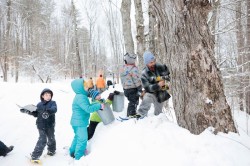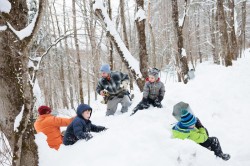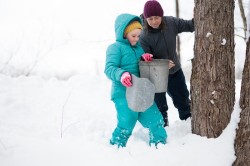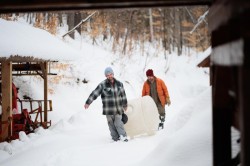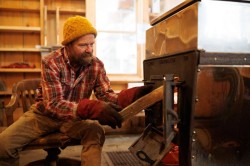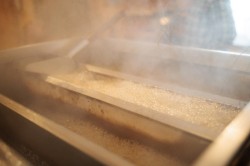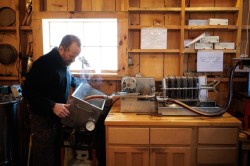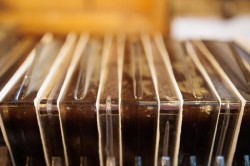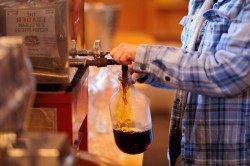
Brookfield Bees is a small farm located in central Vermont and owned by married couple Dan Childs and Marda Donner, who moved from Philadelphia to Vermont in 2007. The farm produces honey, apple cider, and an annual yield of approximately 80 to 100 gallons of maple syrup. Each February, Marda, Dan, Dan’s brother Norris, and several neighbors come together to collect and boil sap. The sugaring operation includes 125 pails hung on trees along two roads, as well as a network of tubing, attached to 500 taps, that runs from the forest into the sugarhouse.
Photographer Ben DeFlorio visited Brookfield Bees early in the 2023 sugaring season and captured these images, excerpts of which appear in the Winter 2023 issue of Northern Woodlands magazine. Special thanks to the Bailey Charitable Foundation for making this photo series possible.







